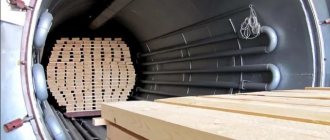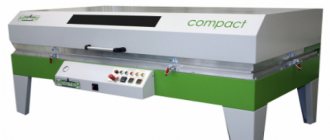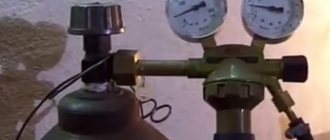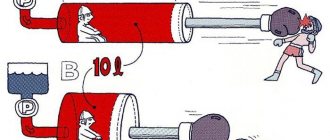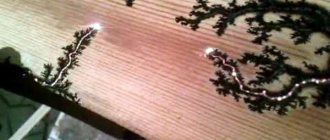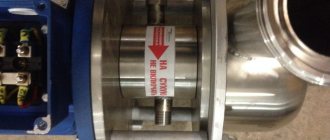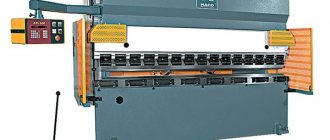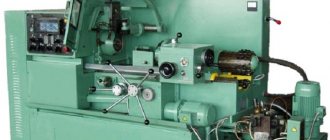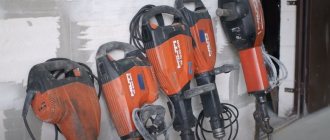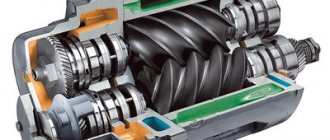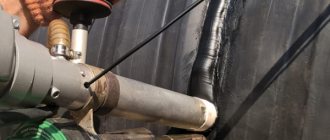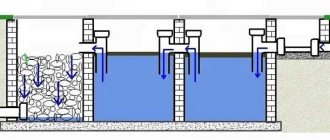Press-vacuum drying - a brief history of the appearance and advantages of vacuum drying of wood
The first person to use press-vacuum drying technology was the scientist Ernesto Pagnozzi. A doctor of technical sciences from Italy has long been studying technologies for vacuum drying of wood. He wrote his first serious scientific dissertation on this topic in 1973. After this, he decided to create his own company, the main task of which was the production of vacuum drying chambers. The company created by Ernesto Pagnozzi in 1974 was named Wood Drying Engineering. Until now, it produces a wide range of vacuum chambers for drying wood of various types. Many of the scientist’s inventions received international patents.
Vacuum drying chambers designed for press drying have the following advantages:
- Wood in press chambers dries 8-10 times faster. That is why the appearance of such devices on the market was comparable to a real revolution. Many manufacturers of drying chambers for drying wood were distrustful of such a new product, but it really showed miracles of efficiency and productivity;
- Press chambers do an excellent job of drying large pieces of wood;
- In such chambers, the drying process occurs evenly, which reduces the risk of cracking to a minimum;
- Vacuum press chambers are excellent for drying valuable wood, since the drying process minimizes the risk of defects.
The drying rate of wood was significantly reduced. For example, pine boards 25 mm thick are completely dried in 17 hours. Beech blanks, which are 32 mm thick, are completely dried in 29 hours.
Professional drying
The body of the professional wood drying chamber is made of stainless steel. For complete sealing, its top is covered with elastic rubber, framed in a metal frame. Sensors are installed inside to measure humidity.
A specialist controls the camera from the outside - the equipment necessary for this is placed in a separate vestibule. It is imperative to have a vacuum pump with enough power to pump out air and accumulated condensate.
For heating, aluminum radiators (in the form of plates) with water are used, which is heated using a boiler outside the chamber. Due to the absence of complex elements, such a machine is easy to operate.
Temperature and vacuum sensors are used to control the process. If something goes wrong, the specialist will track it based on the readings on the monitor.
But professional equipment is expensive - for a medium-sized camera you will have to pay from 3 million rubles. But it copes with raw wood in just two weeks, while with natural drying the wood takes years to dry.
The specific drying time depends on the type and condition of the wood:
- boards made from freshly cut oak will dry for about a month, and freshly cut and thin-cut boards will dry for 15 days;
- wet (30%) oak boards dry from 16 days, but in the thin version (25 mm) - a little more than a week;
- boards made from freshly cut pine take 8 days to dry, and with less humidity (30%) – only 6 days;
- building timber with dimensions less than 150 x 200 mm and a humidity of 65% will dry in 12 days, but thick types (200 x 300 mm) - approximately 21 days.
Time also varies due to differences in instrument settings for different breeds. Some breeds are hardy, while others should be treated gently, gradually, slowly.
Operating principle of vacuum press-drying chambers
Press-vacuum drying chambers operate using vacuum, which is further enhanced by pressure on the stack. The pressure is exerted by a special rubber membrane. A standard vacuum drying press chamber consists of the following components :
- The working chamber in which the wood that needs to be dried is placed;
- Special rubber membrane;
- Rubber seal;
- Metal frame;
- Water pump;
- Heating plates;
- Vacuum pump;
- Electric heater;
- Thermal insulation material;
- Microprocessor;
- Rubber tubes;
- Humidity sensors.
Many of the vacuum press dryers are equipped with a built-in microprocessor and control panel. With its help, you can set different drying modes in the dryer, regulate the humidity in the chamber, and set the pressure required by the technology. It is enough to set the drying program, and the vacuum drying chamber itself will set the desired mode, focusing on the indicators of numerous sensors. The microprocessor of the vacuum drying unit can be connected to a computer, due to which the process can be controlled remotely.
Most vacuum press-drying chambers are compact in size, which allows them to be used in small enterprises. This equipment is especially popular in the field of drying valuable wood. For large woodworking enterprises, vacuum press-drying units are made to order.
Drying stages
Drying of wooden structures is carried out in 3 stages:
- Initial heating of the boards. At this stage, primary heat treatment of the wood surface is carried out. Warming up is carried out without vacuum pressure. The temperature of the material changes depending on the drying mode.
- Drying. At this stage, the pump is turned on to remove air from the drying chamber. During this process, moisture accumulates on the outer layers of the wood. The vacuum pump evenly distributes moisture, which prevents cracking and warping of the material. The water that comes to the surface evaporates and is removed from the body of the dryer.
- Conditioning. At this stage, the boards being processed are cooled. They regain their hardness and strength. The conditioning process is carried out with the pump turned on, which prevents deformation of the workpieces being processed. When the boards have cooled to room temperature, they are removed from the chamber.
The vacuum drying stages are controlled by automatic devices that receive data from safety sensors. These technologies make it possible to preserve the working properties of lumber. Before starting drying, you need to adjust the pressure exerted by the pump on the wood and the temperature. These parameters are adjusted depending on the type of raw material being processed. Oak 25 mm thick is dried at a temperature of 80 °C, the pump pressure should be 500 kg/m2. This material is dried for 28 days. The drying procedure for 25 mm thick pine is carried out at a temperature of 45 °C, the pressure is 550 kg/m2. This material must be dried for 8 days.
Press vacuum drying technology
The first technologies for vacuum drying of wood were invented back in 1964. Over the past decades, this method has not only proven its effectiveness, but also gained enormous popularity, which is growing from year to year. The drying process in press-vacuum drying chambers occurs as follows :
- First you need to warm up the wood at atmospheric pressure. To do this, the wood, which is previously placed in a vacuum chamber, must be heated using special heating plates that are located in the working chamber. Heating occurs due to hot water that circulates in the plates. The water is heated by a special boiler. Vacuum processing cannot be started at this stage. When preheating, the temperature should not exceed 100 degrees Celsius. If the temperature is allowed to rise above, the moisture contained in the damp wood may boil. Because of this, the tree may crack, which will lead to defects. It is for these purposes that sensors are used that record temperature indicators, sending commands to the microprocessor, which quickly reduces the heating efficiency;
- The next step is vacuum drying of the wood. After the moisture in the wood warms up to the level required by the user, the vacuum unit is turned on. Its task is to pump out all the air from the working chamber. Due to this, the moisture that is in the tree will begin to reach the shell of the tree, which will evenly moisturize the wood, preventing it from cracking. The moisture is pushed to the surface of the wood, after which it begins to gradually settle on the walls of the vacuum chamber. At this moment, the steam condenser begins to operate, which pumps out the evaporation;
- The next drying step is vacuum compression. This effect occurs when the chamber lid is pressed. Thus, the vacuum additionally plays the role of a specific press that compresses the wood, giving it a smooth surface;
- The next step is conditioning and refrigeration. When the wood is dried to a certain condition, the heating process of the chamber stops. In this case, the vacuum unit is not turned off so that cooling occurs gradually, under pressure. As a result of such a gentle regime, the boards are not deformed. When the material has completely cooled, you need to turn off the vacuum unit and remove the boards from the chamber.
You can buy a vacuum press-drying chamber in Moscow. By contacting our company, you will receive comprehensive advice on the purchase of vacuum equipment for drying wood. If necessary, our employees will select the optimal models of press-drying chambers for you, based on your requests.
Features of vacuum drying
Vacuum drying is used when processing deciduous wood and trees with a large cross-section. It is carried out in compression drying chambers. This drying method has the following advantages:
- High speed of processing lumber, which reduces the duration of the production process.
- Low pressure on the wood surface. Cracks, bends and other external defects do not form on the treated boards.
- The procedure is hermetically sealed, which prevents bacterial contamination of the wood.
- Ease of operation of drying equipment. Devices for processing boards have small dimensions and are controlled using electronic devices. This allows you to adjust the drying mode.
- Environmentally friendly procedure. Processing wood in a vacuum does not have a negative impact on the environment.
Vacuum drying has the following disadvantages:
- High energy costs. Drying equipment requires large amounts of electricity to power it.
- High cost of equipment. Dryers for lumber cost 360,000 rubles.
- Small loading volume. This drying method does not allow processing a large number of wooden structures.
Vacuum drying has the following characteristics:
- Electricity consumption: 2.8 kW/m3.
- Moisture removal: 180-300 l/m3.
- Thermal energy consumption: 129-762 Kcal/m3.
There are 3 main modes of vacuum drying of wood:
- Soft: processed materials retain their strength and physical properties.
- Normal: as a result of heat treatment, the color of the wood changes and its wear resistance changes.
- Forced: after drying, the materials become brittle and acquire a dark color.
When choosing a drying mode, it is necessary to take into account the type of wood, the size of the lumber being processed, the humidity value, the features of the drying apparatus and the quality category of the plant raw materials. If the wood's moisture content is more than 20%, then drying should be carried out at a temperature below 100 °C.
As a result of heat treatment, the following categories of wood can be obtained depending on the moisture content:
- Wet: humidity is more than 50%.
- Air-dry: humidity is 15 – 20%.
- Room-dry: humidity is 8 – 12%.
- Absolutely dry: there is absolutely no moisture in it.
Humidity is determined by the weight of the boards and shavings. When calculating this indicator, it is necessary to take into account the residual stress of lumber and the coefficient of moisture difference.
